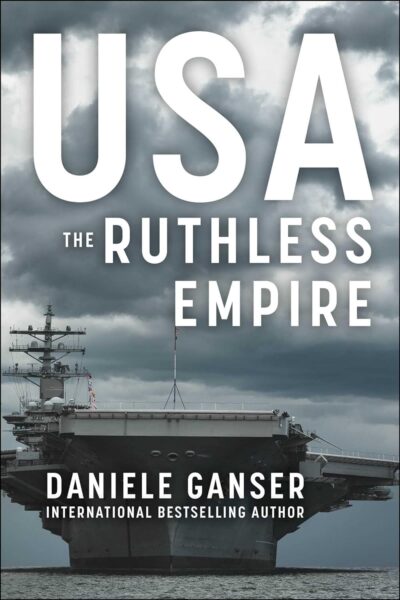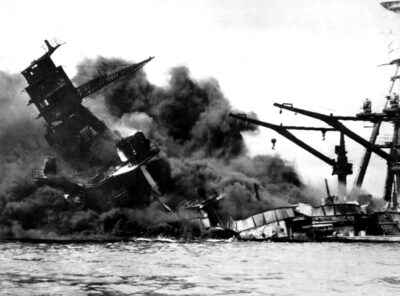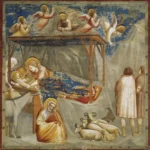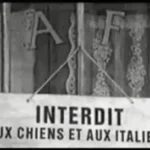January 27, 2025 Hidden history, Totalitarianism
Our problems are manmade.
Therefore, they can be solved by man
The Greatest Threat to World Peace ? The U.S.

If you think of the United States as a perhaps imperfect, but overall positive force in the world…
If you are disgusted by the idea that the U.S., “a republic founded on the principles of freedom and democracy” has become a world imperialist power that engages in assassinations, coups, acts of terror, and totally illegal wars…
If you want to promote peace, but have not yet explored the deceptive events that have always fed the US warmongers’ thirst for war…
Here is a book that will not only shed light, but also paint a truthful picture of the less than rosy impact that U.S. foreign policy, and especially U.S. actions, have had on the world around us.
USA : The Ruthless Empire, by Swiss historian and researcher Daniele Ganser, is the new English translation of his book Imperium USA, originally written in German and published in 2020.
Here is a summary of the key points of the book, including lesser known ones, and possible solutions for a peaceful future in the world.
In this book, Ganser takes us on a tour of meticulously documented historical events that could be shocking to anyone committed to fairness and human dignity.
His intent is to strengthen the peace movement, which includes citizens from around the world, including the United States, who oppose war and the lies and propaganda used to initiate and perpetuate such conflicts.
Before delving into the subject, Ganser sets the stage in Chapter 1, titled “The United States Poses the Greatest Threat to World Peace“.
Ganser provides a dizzying array of data to support his claim, including the number of countries bombed by the U.S. since 1945 (at least 23), the number of military bases abroad (over 700), the world record for U.S. military spending (approaching $1 trillion per year), the number of U.S. soldiers abroad (over 200,000), and the fact that the U.S. is the only country to have used nuclear weapons.
The author also shared the results of a Gallup poll of 67,000 people in 65 countries on the question, “Which country is the greatest threat to world peace today ?” in which 24% said the United States, while between 5% and 9% said one of the other six countries, and less than 5% said one of the other 12 countries.
Chapter 2, “The U.S. is an Oligarchy“, highlights a disturbing manifestation of the U.S. empire: the astronomical disparities in wealth and income (540 billionaires vs. more than 100 million living in absolute poverty), without mentioning the worldwide impact of an oligarchy of the super-rich who run the empire and manipulate information to their liking, with sham elections that have no effect on so-called realpolitik.
Chapters 3 and 4 describe the major antecedents of the current U.S. empire, both before and after the independence of the new U.S. republic from Great Britain in the late 18th century : in particular, the mass extermination and expulsion of Native Americans from their territories, and the importation and exploitation of slave labor from Africa throughout much of the new nation.
Chapter 5 deals with the explicit launch of imperial actions in the mid- and late 19th century, when the United States launched wars based on lies and often false flag episodes to annex half of Mexico, to conquer former Spanish colonies as real possessions (Puerto Rico and Guam), or with a facade of autonomy but actually under strict U.S. control (Cuba and the Philippines).
In addition, the Kingdom of Hawaii was conquered and annexed under threat of force.
Chapter 6, dedicated to World War I, analyzes how, even before the U.S. entered the war in 1917, U.S.-based war criminals were very active in financing both belligerents.
J.P. Morgan & Co. financed England and France, while U.S. corporations sold arms to Europe.
As a result, U.S. interests in deliberately prolonging the war caused millions of avoidable deaths.
War propaganda flourished, vilifying the Germans, a people who had never accomplished anything against the United States.
Burgers became “freedom steaks” and sauerkraut became “freedom cabbage” (remember that in 2003, when France was reluctant to join the war against Iraq, the U.S. Senate cafeteria sold “freedom fries“).
The Espionage Act was passed to persecute pacifists (including Eugene Debs) and deny freedom of speech, and it is still being used today to persecute Julian Assange and Chelsea Manning for exposing U.S. war crimes in Iraq.
Chapter 7 examines the role of the United States in World War II, exposing a carefully cultivated image of “honorable freedom fighters“, but more importantly, real bellicose tendencies and highly contradictory “loyalties”.
Ganser recalls that U.S. companies were authorized to sell oil to Nazi Germany both before and during the conflict.
Without this fuel supply, the Nazi threat would most likely have dissipated before some of the worst atrocities were committed.
Once again, the U.S. unnecessarily prolonged the war.
Moreover, although officially allied with the Soviet Union, the United States and Great Britain actually liked Hitler’s actions against Communist Russia and avoided opening a Western front until mid-1944, when it appeared that the Soviet Union (which by then had already lost 27 million citizens in World War II) might be the only nation to defeat the Nazis.
Ganser unearthed this incredible phrase, uttered in June 1941 by then U.S. Senator and future U.S. President Harry Truman :
“If we see Germany winning the war, we should help Russia ; and if Russia wins, we should help Germany.
That way we’ll allow them to kill as many people as possible, although I certainly don’t want Hitler to win in the end”.
In other words, once again the usual motto : “Divide and conquer“.

Truman himself, as President of the United States, ordered the first and only use of nuclear weapons in history, killing hundreds of thousands of civilians in Hiroshima and Nagasaki and terrorizing untold numbers of people at a time when Japan was already ready to surrender.
In addition, Ganser amply documents how the U.S., in order to gain popular support for U.S. entry into the war, deliberately pushed the Japanese to attack Pearl Harbor to provide the desired casus belli.
The infamous attack on December 7, 1941, came as little surprise to President Franklin Roosevelt, who allowed it to happen without doing anything to prevent it, sacrificing thousands of American servicemen in the process.
As pointed out in Chapter 12 on the 9/11 attacks, Ganser notes that a Hollywood movie, “Pearl Harbor“, which re-enacted the myth of the surprise attack, was released in May 2001, subliminally preparing audiences for what would happen a few months later on 9/11.
Chapter 8, “Secret War“, shows us the emergence of the Central Intelligence Agency and the National Security Council in the postwar period.
The chapter includes a list of situations in which the U.S. used them to carry out numerous coups (Iran, Guatemala, Chile), assassinations (Lumumba in the Congo, Trujillo in the Dominican Republic, Diem in Vietnam, Che Guevara in Bolivia), assassination attempts against Fidel Castro, and the failed invasion of Cuba in 1961.
Finally, President Kennedy was so outraged by these illegal operations that he fired CIA Director Allan Dulles on the spot.
Note that Ganser devoted an entire earlier book, NATO’s Secret Armies : Operation Gladio and Terrorism in Western Europe, to numerous other covert operations involving the United States, through NATO and the CIA, which are not covered in this book (but which I have covered extensively in this lengthy article).
These include false flag assassinations, the bombing of civilians (always blamed on communists), and the manipulation of elections in much of Western Europe during the Cold War.
Chapter 9 focuses on the Kennedy assassination, summarizing the evidence that completely exonerates Lee Harvey Oswald and strongly implicates Allan Dulles in the conspiracy that led to that heinous murder.
After New Orleans District Attorney Jim Garrison brought most of the evidence to light in 1967 and questioned the validity of the Warren Commission Report (authored by Dulles himself), the CIA created and widely publicized the term “conspiracy theorist” as a derogatory term for anyone who questioned the official narrative.
In fact, those who coined the term in 1967 invented it at the behest of the CIA to solve the problem of 65 percent of Americans who, four years after JFK’s assassination, did not believe the official version of lone gunman Lee Harvey Oswald.
According to the CIA, this “problem” had to be solved.
The communications agency charged with this task, within months, came up with the idea of ridiculing and marginalizing anyone who did not support the official narrative, according to the definition of “conspiracy theorist“.
And so it was.
We have known this since 1997, because after 30 years, as usual, the CIA files are declassified and this information is verifiable by anyone in the public archives of the United States.
Interestingly, in 1979, the U.S. House of Representatives Select Committee on Assassinations publicly stated that “there is a high probability that two men shot Kennedy ….. The Committee believes, based on the evidence before it, that President John F. Kennedy was probably assassinated as the result of a conspiracy.
The Committee is unable to identify the other gunman or the extent of the conspiracy“.
This report was conveniently obscured by the media, and even today few people are aware of it.
Chapter 10 on the Vietnam War, which escalated rapidly after Kennedy’s assassination, is a painful reminder to those who lived through it of the needless suffering inflicted on millions of Vietnamese and tens of thousands of U.S. soldiers, as well as the damage done to neighboring countries such as Laos and Cambodia.
The latter two countries were bombed by the U.S. without provocation, fueling the brutality of the Khmer Rouge, whom the U.S. could then demonize to divert attention from its own role in the bloodshed.
Ganser also recalls the Gulf of Tonkin incident of 1964, which was used to dramatically escalate the Vietnam War.
Although the world was repeatedly warned about the propagandistic “domino theory,” there was actually no chain reaction that led neighboring countries to become communist after Vietnam’s victory over the United States in 1975.
Thus, all that death and destruction was unnecessary except to fill the coffers of the notorious war merchants.
In chapter 11, devoted to the Iran-Contra affair, Ganser illustrates another example of how the United States played two adversaries off against each other.
On the one hand, it supported Saddam Hussein in Iraq’s war against Iran; on the other hand, it secretly sold arms to Iran and used the profits to finance the Nicaraguan Contras, who supported the dictatorial Somoza regime.
Ganser also shows how the CIA hypocritically participated in the cocaine trade to finance its covert operations.
How many lives were ruined by these actions abroad and in drug-ravaged U.S. cities?
In chapters 12 and 13, devoted to 9/11 and the War on Terror, respectively, the U.S. empire ushers in the 21st century with an overwhelming display of shock and terror.
The first subtitle, “A New Pearl Harbor“, is prescient : it refers to a prophetic statement made in 2000 by the neocon Project for a New American Century that it would be difficult to convince the U.S. population to accept massive military spending and upgrades to fight multiple wars at once “without a catastrophic and catalyzing event such as a new Pearl Harbor”.
Ganser suggests three ways to evaluate the events of September 11, 2001 :
(1) Surprise attack that caught everyone, including the top leadership and intelligence agencies, completely off guard.
(2) LIHOP (let it happen on purpose), which implies that the key players were aware of what was about to happen, but had no intention of stopping it.
(3) MIHOP (made it happen on purpose), which implies the direct complicity of certain actors within the U.S. military and intelligence apparatus and their agents.
In the book, the historian easily refutes thesis (1) and points to hypotheses (2) and (3) as much more plausible, leaning toward (3).
Much research has been done to dismantle the official 9/11 story that 19 Muslim hijackers and a few men in a cave in Afghanistan were solely responsible for the death and destruction that day.
Ganser includes references to much of this research in his footnotes.
Coming to the present day, the author of this review refers readers to the International Center for 9/11 Justice for an updated collection of 9/11 research.
In his book, Ganser examines a number of key anomalies :
The blatant fallacies of the official 9/11 Commission Report by Philip Zelikow, a Bush administration insider.
The utter failure of the multi-billion dollar U.S. defense system to prevent an attack, even on its own heavily fortified headquarters.The multimillion-dollar profits made by unnamed individuals who invested heavily in put options in the days leading up to 9/11 (speculating that the stock of United Airlines and American Airlines would soon plummet in value), indicating specific “foreknowledge“.
Clear evidence that World Trade Center Building 7 was destroyed later that day in a controlled demolition, and the refusal of U.S. authorities and the media to consider this possibility.
Evidence of the use of explosives in the destruction of the Twin Towers.
With the fall of the Soviet Union ten years earlier, the U.S. Empire was in search of a new great enemy.
The crimes of 9/11 provided an “ideal” replacement : the endless and amorphous “war on terror“, which justified numerous military incursions and the proliferation of U.S. bases in every corner of the planet where “terrorists” were believed to be lurking.
Ganser details the U.S. role in the illegal wars in Afghanistan, Iraq (both of which began with lies about alleged weapons of mass destruction), and Syria, which resulted in millions of deaths, not to mention the horrific abuse of Iraqi prisoners by U.S. soldiers at Abu Ghraib.
On an optimistic note, Ganser points out how the blatant injustice of the wars in the Middle East-just like the injustice of the Vietnam War before it-has galvanized the peace movement from within the United States, prompting massive demonstrations and forms of civil disobedience in opposition, and pointing to a vast number of people denouncing U.S. war and empire and seeking peaceful coexistence with all peoples.
In addition to famous leaders of the peace movement such as Jeannette Rankin, Martin Luther King Jr. and Mahatma Gandhi, the author emphasizes the role of ordinary citizens in affirming their commitment to all peoples as members of the human family and rejecting the attempts of elites to divide and conquer.
Ganser also points out how the rise of alternative media has enabled the dissemination of information that counters mainstream lies and war propaganda.
However, the explosion of the Internet and social media has also proven to be a double-edged sword, as Ganser himself points out in chapter 14, “The Digital Empire“, which highlights the consolidation and monopolization of technology and information flows by digital giants such as Google, Facebook, and Wikipedia.
The final chapter, “The Battle for Eurasia“, details the U.S. role in the 2014 coup in Ukraine, which catalyzed the ensuing and now exponentially escalating violence, as well as the unstoppable eastward expansion of NATO.
All of this, contrary to U.S. assurances in 1991 that this would never happen, another key factor in the chaos unfolding there today.
The original German edition was written two years before Russia’s “special military operation” in Ukraine in 2022.
This new English edition adds a few paragraphs condemning the Russian invasion as a violation of the UN Charter, and points out the provocations by NATO and Ukraine that have fueled this “proxy” war between the United States and Russia.
The book also does not cover the current state of U.S.-China relations, but in the last chapter the author reminds us that the humiliation China suffered at the hands of the British Empire during the Opium Wars of the 19th century has made it cautious in its current relations with the West.
We also learn of China’s announcement in 2013 of a “New Silk Road” through a massive transcontinental infrastructure project, also known as the Belt and Road Initiative, which is currently in an advanced stage of implementation.
This project, conceived (at least in theory) not as an imperial land and resource grab, but rather as a mutual benefit for all participating nations, would allow them to respect each other’s sovereignty and reduce tensions between them.
In his conclusion, Ganser states :
“The peace movement must be confident that a world without war is possible.
A fundamental exit from the spiral of violence is possible.The decisive factor is whether we really want inner and outer peace.
If this will is strong enough, we can be guided by three principles : the human family, the UN ban on violence, and mindfulness”.
These three principles, he notes, can be applied to overcome polarization, profit and propaganda.
A key tool of the U.S. empire is to divide people into favored and demonized, pitting them against each other and allowing elites to generate profits for the few from the struggle of the many.
Awareness can help people quickly realize that war and lies always go hand in hand.
Don’t be fooled by false flag operations.














